I’m sure you knew that there would be a history story somewhere during our trip to Seattle and here it is. And, it ain’t all pretty. We learned about exploding toilets and skid rows. We learned about rats and wooden drinking water pipes. But it was all fun and followed our walk through early downtown Seattle. We began the day with a tour of the Underground in Seattle. Begin at the bottom, my mother always said, and work your way up.
The Seattle Underground
The tour began back in the 1960’s with a newspaper columnist for the Seattle Times called Bill Speidell. He got a letter once from a reader asking about the Seattle underground. He knew nothing about it but told her he would do some research. When he got back to her he invited her to come (in a newspaper story) with him on a tour of the underground at 3:00 on Saturday - and 500 people showed up (he must have had a lot of readers). He collected $1.00 from everyone and gave them a tour - a tour which is still given today and is one of the most popular tourist attractions in Seattle.
However, he is also known as one of the most fervent preservationists in Seattle, wanting to restore and preserve the Pioneer Square area where Seattle actually began. By the 1960’s, this area, like many areas in central cities in the United States was run-down, in disrepair and being abandoned as people looked to the suburbs for homes and businesses. Others joined his cause and today Pioneer Square is full of activity from restaurants, parks, waterfalls, hotels, shops and - tours.
Here we are in the tour meeting room getting some background. Note the marvelously carved bar in the background.
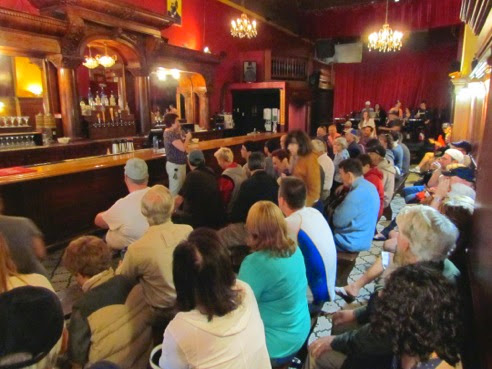
But it began back in the 1850’s when Seattle’s first settlers built their homes in the lowlands near the bay, of course, flat and level with a water view. What more could one want? Today we call these areas ‘tidal flats’ and they rise and fall with the tide - twice a day. Not a place to put a house. Obviously plumbing was a problem. They first used hollowed out wooden logs for water pipes to get their water to their homes from the wells.
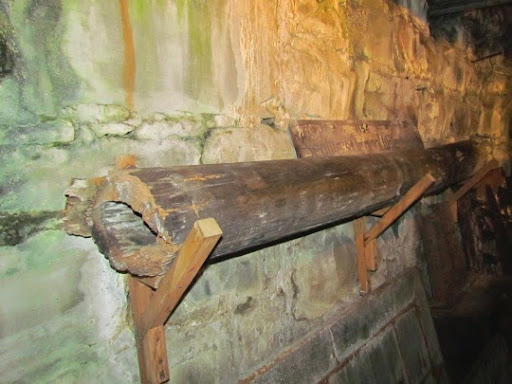
Their sewage emptied directly into the Sound although when the tide came in toilets had a nasty habit of filling up. Then they began to print the tide tables in the local newspaper to try to end that problem.
One of the city’s early settlers was David ‘Doc’ Maynard who wanted the city to grow. First he changed the name of the small settlement from Duwumps to Seattle, naming him after a friend of his, Chief Seathl of the Duwamish and Suquamish tribes. (And, really, who wants to live in a city named Duwumps?) Next to sold some of his substantial parcel of land cheaply to draw more people but also gave a large parcel to Henry Yessler who came to build a lumber mill in the area. Oh, good. Now we have a lumber mill to employ people and to provide building materials for our home. And, hey, let’s put all the left-over saw dust into the streets to mat it down. Early recycling here. But, what a mess. And, what the horses do this this fine sawdust, I’m not even going to explain.
When the trees near the shoreline ran out, Yessler moved up the hill, cleared it, greased the logs and skidded them down to his mill. ‘Skid’ row? Sure enough, this road later became one of the less desirable parts of the city as the gentry moved up the hill.
But the town was booming, it was a city of 30,000 by June of 1889, people were moving in, buildings were going up. One estimate is that in the first half of 1889, Seattle was gaining 1,000 new residents per month; in March alone, there were 500 buildings under construction, most of them built of wood. Surprise. But what about those plumbing problems, that twice-daily flooding, the dirty streets, the rats? Who cares? Easy to ignore little things like that when you’re bustling, growing and adding new businesses every day.
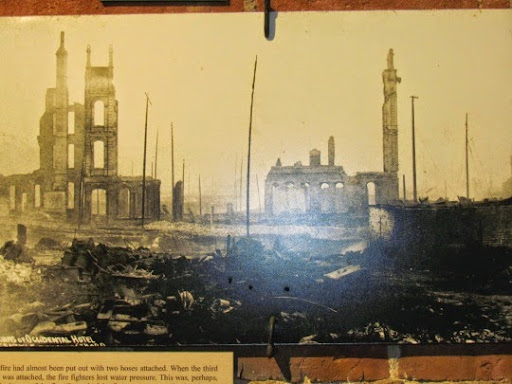
It took a devastating fire in June of 1889 to bring about some much needed changes. The fire began when an assistant furniture maker was heating some glue, heated it too much and it boiled over, caught fire, spread to the floors covered in turpentine and wood chips. Then, he threw water on the fire, thinned the turpentine so it spread further. Whoosh. The fire grew. Next door was the liquor store - oops, that only added fuel to the fire. Here’s a picture after the fire. Note the melted rails - the fire was that hot. But also note that hardly any buildings were left. A clean slate.
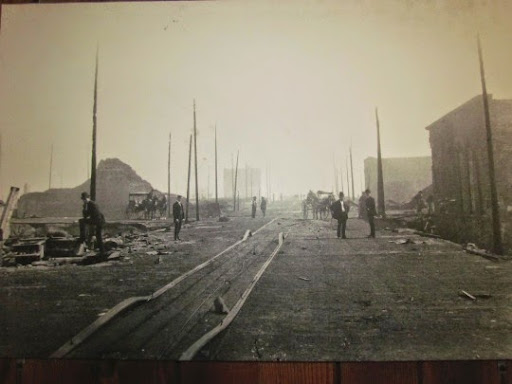
When the volunteer fire department came and hooked up their hoses to the few fire hydrants with the small wooden pipes, the fire had spread far beyond the ability of that water. They then tried to use the bay but the tide was out and their hoses were too short. And, did I mention that the Fire Chief was out of town attending a fire convention? In the end the fire wiped out 25 city blocks, along with the wharf, the lumber mill and all the wooden homes and wooden buildings in the area. Jobs and property losses were huge. No lives were lost in the fire although it was later estimated that 1 million rats were killed. Well, one problem solved.
But the city took the opportunity to improve and eliminate some of the old problems. 2 major rules: build out of brick or stone, raise the streets up 22’. Businessmen rebuilt in a jiffy. The city took longer to rebuild the streets to the required 22’ level. First they lined the streets with 22’ high walls and filled them in. OK, now we’ve got the shops and businesses and the streets but what about the sidewalks? Oops, the city was out of money. So you’ve got a moat around all the business blocks with the streets on one side and the buildings on the other. Let’s put in ladders so people can climb up to the street, cross it and down the ladder on the other side to businesses on the next block. Luckily, businesses had put in an entry door on what used to be the first level so people could get into the stores. The whole area looked like a giant waffle.
Here are a few pictures of the original sidewalk. Note the brick walls on one side (that’s the street side) and the business store fronts with doors and windows on the other side. The sidewalk was in the middle - and it is covered now but still open enough to walk through.
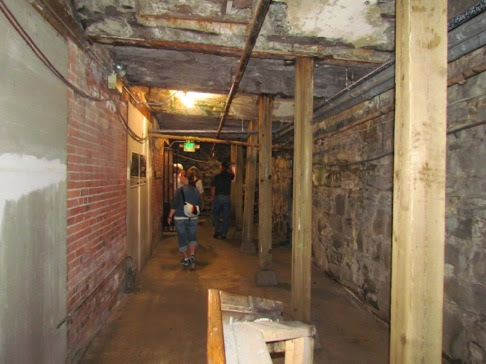
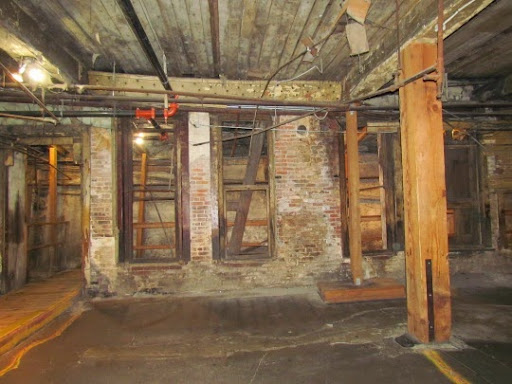

Here’s what they used for lighting on the lower level.
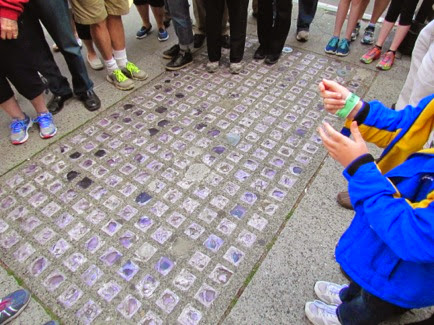
And, here’s what it looked like from the underground. It did give a lot of light.
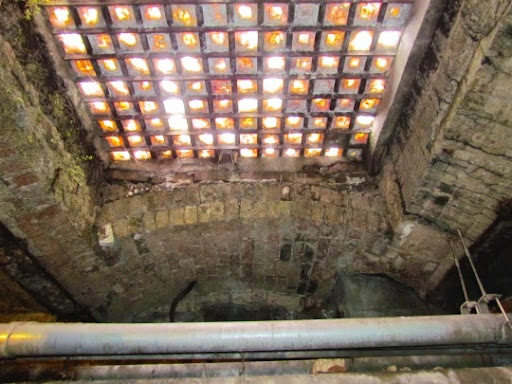
And this went on for 8 years. But there were other improvements: they eliminated the old wooden water pipes and installed a city water department, they also changed the volunteer fire department to a professional one and put in more hydrants. Good going, guys.
Oh, by the way, did I mention the census that the mayor took in the in late 1800’s? Well, lots of lumbermen as he had thought since that was a huge industry but there were also a lot of seamstresses - and they all worked in the same house. Hmmm.
So, where did Seattle get the money to finish off the sidewalks? Glad you asked that question. That leads us to our next stop for the day: the Klondike National Park right in Pioneer Square. But that’s a story for the next blog.

No comments:
Post a Comment